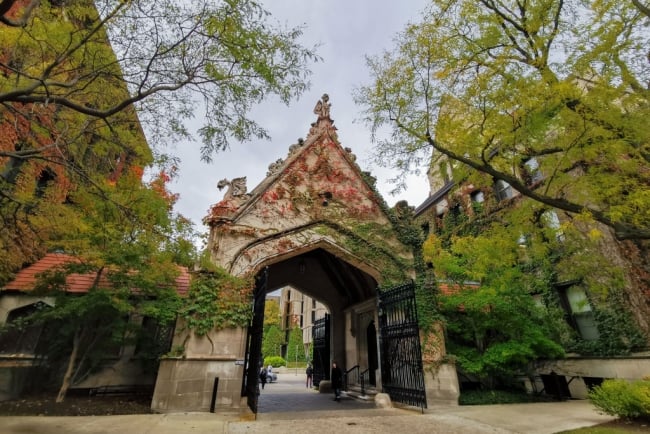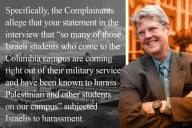You have /5 articles left.
Sign up for a free account or log in.

The University of Chicago is one of the founding partners of STARS.
Beata Zawrzel/NurPhoto/Getty Images
Since its founding last year, the Small Town and Rural Students (STARS) College Network—a coalition of 16 public and private institutions—has sent representatives to 1,100 small-town high schools in 49 states, providing more than 700,000 rural students with the information and support they need to enroll in a bachelor’s degree program.
Now many more students are poised to receive the same help: STARS is doubling its membership to include “32 of the nation’s most prominent institutions,” according to an announcement released today. The expansion will be supported by $150 million over the next 10 years from Trott Family Philanthropies, which provided an initial $20 million for the launch.
“When I look at the sheer number of high schools we visited … it’s exponentially more than anything we could have done as individual institutions,” said Marjorie Betley, deputy director of admissions at the University of Chicago and executive director of STARS. “It was a logical next step to then say, ‘OK, this does seem to be working? Can we continue to scale it?’”
Some STARS members have well-established programs for rural students that they are seeking to expand, while others are creating new ones. But the growth reflects a push to recruit rural learners, as colleges across the country face an overall decline in enrollment and look for new ways to diversify their student bodies in the wake of last year’s Supreme Court ruling prohibiting affirmative action.
Unique Obstacles
Because of distance and cost, college admissions officers are far less likely to visit rural areas than urban and suburban ones. And guidance counselors in rural U.S. high schools are often overburdened; the average caseload per counselor is 310 students, with a high of 574 in rural Michigan. That means students have less contact with educators and college-access professionals who can guide them in exploring the full range of higher education opportunities.
Network member institutions are working to increase rural enrollment by supporting learners from their first college info session until their last lecture and graduation ceremony.
Some institutions have funded cost-free visits and summer college-preparation programs to help students get a taste of campus life. Others lead monthly virtual panels with admissions staff to advise students in the application and selection processes, or they help address transcript gaps by providing free online tutoring in math and prerequisite courses.
For Destiney Samare, a graduate of Oak Hill High School in Winthrop, Me., who will be a first-year student at the University of Chicago this fall, the one-on-one investment from STARS officials really paid off.
“Not only did STARS give me the opportunity to explore colleges I could only dream of in person,” she said in a STARS press release, “it gave me hope that schools like the University of Chicago actually care about my chance to go beyond the boundaries of my small town.”
Sometimes students like Samare face challenges that continue well past completing the Common App or filling out the FAFSA.
While students in small towns and rural communities graduate high school at roughly the same rate as those in metro areas, they are only half as likely to graduate from a selective college or university. They often face unique obstacles when acclimating to a more urban—and often more liberal—environment. Many have to adapt to lecture halls filled with more students than attended their entire high school. But Betley hopes to ease their transition by expanding support via new members and additional funds.
“We are thinking about retention as the second phase,” she said. “How do we support them, once they’re on our campuses, in terms of academic advising, social advising, financial, career?”
STARS members have sought to build a sense of community on their campuses by introducing rural student clubs and fostering local business partnerships so students can go home for the summer and complete internships, just like their peers in urban or suburban regions.
Network members have also campaigned for additional philanthropic giving; advocated for federal, state and local policy changes; and sparked academic research on rural access.
The University of Wisconsin at Madison’s Student Success Through Applied Research lab, which has focused on rural college access since 2020, has expanded its work since joining the STARS network, Betley said. The lab has produced an interactive mapping tool and report to document which rural areas have access to postsecondary programs and provide new insights into rural college enrollment trends. The findings even helped the university identify districts where students can use support and launch a statewide college-access program called College for Rural Wisconsin.
“STARS and its affiliated programs are opening doors in higher education for high-achieving rural students they might not have found otherwise,” said Byron D. Trott, the rural access network's key benefactor and CEO of the merchant bank BDT & MSD Partners. “The students, campuses and our economy will all be better for it.”








